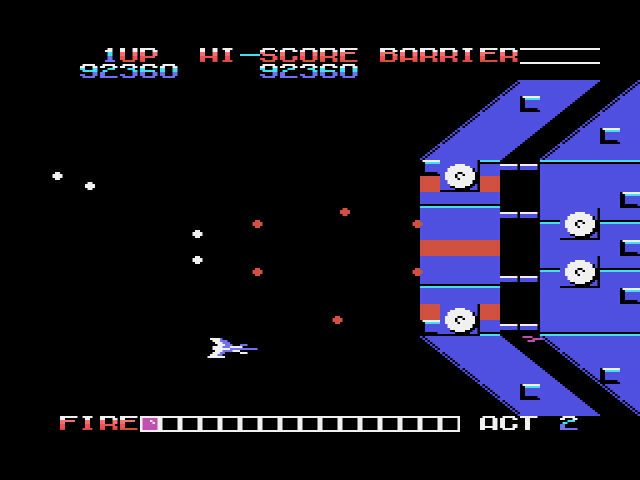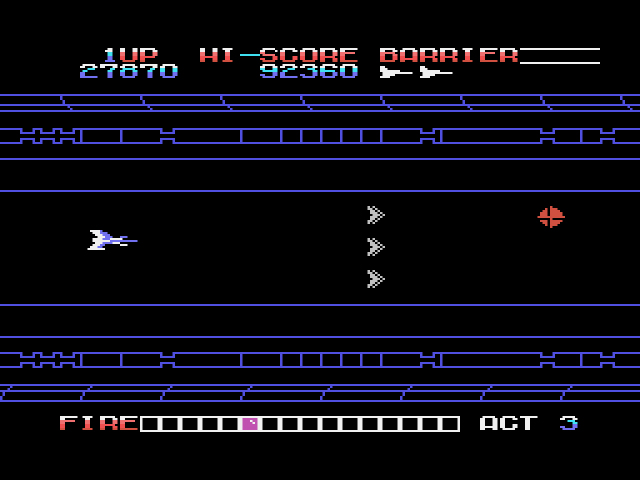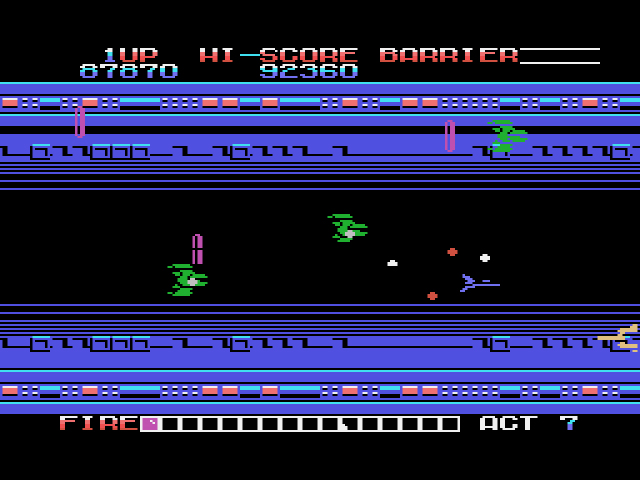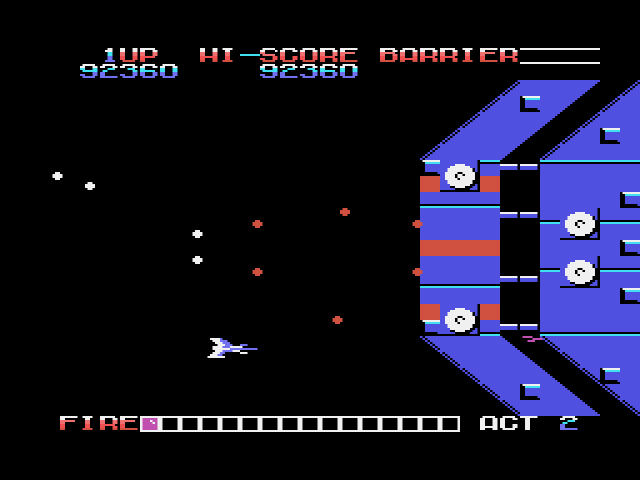
PLAYERS: 1-2 alternating
PUBLISHER/DEVELOPER: Sega
GENRE: Shoot-em-up
RELEASE DATE: 1986 (JP)
Gulkave, you generous, infuriating bastard of a shoot-em-up. Thirty stages, eight bosses, unlimited continues, unlimited death. Without the continues, only the nimblest of warriors would get past the second stage. Without the constant death, nobody would want to get past the second stage. And thirty stages? Eight bosses? Modern shoot-em-ups should be so giving. Gulkave is more about content than creativity, but the game’s relentless pace keeps one motivated until the end.
Gulkave begins like any other horizontal shmup circa 1986. You’re a starship in the depths of space, and your goal is to shoot down streams of enemies with varying movement patterns. There are about a couple dozen enemies you’ll encounter throughout the course of the game. They range from: little red balls that follow you but don’t shoot at you, to green boogers that won’t attack you unless you attack them, to white orbs that travel along the top and bottom of the screen and shoot out a stream of bullets, etc.
There are also eight bosses, otherwise known as The Eight Fortresses of the Gulbas Empire (patent pending). The fortresses appear at the end of every third or fourth stage and have several pieces that need to be destroyed before they’re officially toppled. You have a life meter entitled “Barrier” that allows you about three or four hits, depending on if your ship absorbs a bullet or an entire enemy. It’s sweet that Gulkave allows you more than one hit before you explode, unlike other shumps, but such kindness doesn’t make the game any less forgiving. If anything, a life bar makes the game expect more from you.

Despite my best efforts and research on the Internet, I’m still not entirely sure how Gulkave‘s power-up system works. Power-ups take the form of shimmery cubes, and they emerge from the occasional enemy (their emergence always seems to be random). Shoot the cube to release an icon with the number 1, 3, or 5. Collect the icon and your weapon might upgrade. Sometimes your laser stream will upgrade from one to two beams. Other times, your beam will shift to a spread weapon, or worse, stay the same. None of the numbered icons are consistent with what they do to your original weapon, in other words. You could collect a “3” that turns your pea-shooter into hot spread fire, or you could collect a “3” that keeps the pea-shooter in its current weak state. You’re at the mercy of the Gulbas Empire.

The in-game progression is confusing, as well. Notice the horizontal bar that’s divided into squares at the bottom of the screen. The bar seems to be titled “FIRE,” though from what I can see, it has little to do with your weapon/upgrade. When you begin a level, the furthest-left square is highlighted. As you progress through a level without dying, the highlighted square moves further along the bar to the right-hand side, as if the bar simulated your progress through the level. Once you die, however, the highlighted square shifts all the way back to the left, even though you don’t start the level at the beginning. When you die, you’ll begin the level around the area of your death, despite the bar showing otherwise.
The trick with the bar, then, seems to be to not die through the entirety of a level, so the highlighted square can shift all the way from the left to the right. But how does one not die once throughout an entire level? Doesn’t Sega know that Gulkave is incredibly difficult? The mystery of the horizontal bar doesn’t need to be solved in order to finish the game, but I really want to know what happens when the highlighted square reaches the farthest right. Do you get lots of bonus points? Does your starship turn into a giant cat and produce rainbow trails through the sky? Does Gulkave declare you “The Master of Shooting Things” before exploding in your SG-1000? The Gulbas Empire has many secrets, it would seem. If you know what happens or you have some speculative theories, please leave a comment below.

Confusing, frustrating, addicting: all good shmups possess at least two of these traits. Gulkave has all three. While I wish the game had a bit more personality or better power-ups, I can’t deny the sheer volume of stages the game provides. And because Gulkave is a no good sonuva that taunts you with periods of success followed by utter chaos where you lose all your lives, you’ll want to make sure the game is good and beat before you put it down.
B


7 replies on “Gulkave (SG-1000, 1986)”
Great review really makes me want to play the game, looks like Sega had got to grips with the SG hardware at this point.
Just in time for the system to die!
Loved reading that. Reading that opening paragraph I had the voice of a million 1980s action film trailers in my head. Don’t believe me? Read it again like it’s the trailer for a Chuck Norris flick;
“Thirty stages, eight bosses, unlimited continues, unlimited death. Without the continues, only the nimblest of warriors would get past the second stage. Without the constant death, nobody would want to get past the second stage.”
Staying on the 1980s movie theme this looks more like Tron than any other game I have ever seen judging by those screenshots.
Thanks man! Cheesy 1980s film trailers is probably what my subconscious was going for.
Goal achieved then 😀
The bar on the bottom is for your weapon upgrades. It is a 16 point system. Every couple of points, your weapon will be upgraded. If you go over 16 points you will wrap around to the first weapon. Also, the second to last weapon is a weak weapon, so to get the most powerful weapon you must endure using a weak weapon for a moment of time.
Thanks for the info!